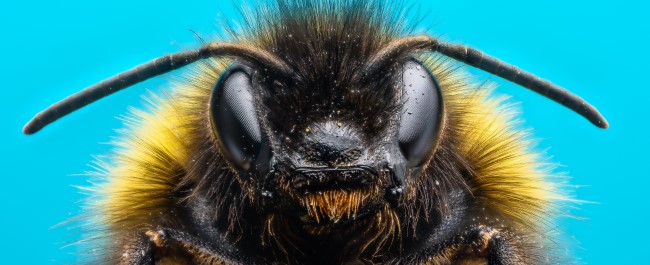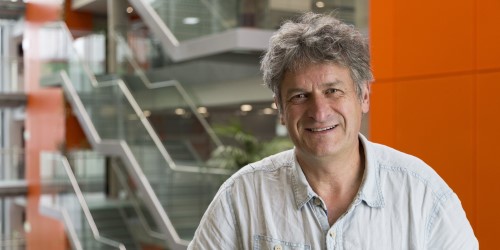Revealing how bees sense electric fields: material properties of bee antennae using x-rays

Understanding the effects of anthropogenic change on the function of bee sensory systems and the impact that these changes may have on both pollination biology and population dynamics.
The challenge
Animal pollinators, including bees, are estimated to be responsible for around one third of global crop production, leaving worldwide agriculture dangerously vulnerable to ongoing pollinator decline. Many pollinator-dependent crops are rich in nutrients, especially vitamins. Were these crops to fail, the impact of nutrient deficiencies would be catastrophic across the globe. Bees are particularly important pollinators, contributing 80% to insect crop pollination in the US, and show remarkable sensitivity to weak electric fields which they use during pollination. But in our ever-changing and increasingly noisy environment, the way they do this and the impact of human activities is not known.
Bees are endowed with sensory organs that are sensitive to weak electric fields, and use them to detect and interact with flowers in the context of pollination. Although key to their functionality, the electric charging of the bee antenna and the so-called placodes receptors is poorly understood. Our recent observation using electrostatic probe microscopy reveals that the placodes are permanently charged, even after death. This electret-like behaviour is exceptional and therefore most intriguing. We hypothesise that this permanent charge results from material properties of the insect cuticle. In effect, bumblebees invariably present positive electrical charging when rubbed against any material, plastics or flowers, tested thus far. This strong electron-shedding tribolelectrical behaviour supports electroreception and interactions between bees and negatively charged flowers.
Employing powerful x-ray photoelectron techniques, this project aims to improve our understanding of bees’ electrical sensors by analysing the constituent materials of bee antennae and their electronic properties.
What we're doing
To improve our understanding of bees’ electrical sensors, we are analysing the constituent materials of bee antennae and their electronic properties using powerful x-ray photoelectron techniques.
By investigating the biophysical mechanisms by which electroreceptor organs operate we aim to shed light on how bees interact with sources of electricity in their environment and the range of electrical stimuli that can be detected.
How it helps
An understanding of this mechanism is fundamental to determining whether, and if so how, the presence of often elusive anthropogenic sources of electricity in the natural environment may constitute a form of electrical pollution by disrupting the natural communication channels that exist between flowers and key pollinators such as bees.
Investigators
- Prof Daniel Robert, Biological Sciences
- Dr Jude Laverock, Chemistry
- Prof Neil Fox, Physics & Chemistry
 Lead researcher profile
Lead researcher profile
Professor Daniel Robert, School of Biological Sciences
Related research centres
Funders
- Cabot Institute for the Environment Innovation Fund